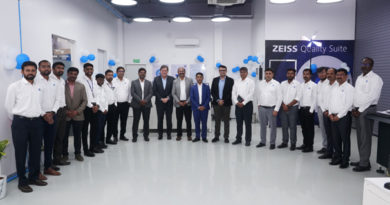What is the Difference Between Cloud as a Service and Platform as a Service?
This article will cover:
- The definition and benefits of Cloud as a Service (CaaS)
- The definition and benefits of Platform as a Service
- The differences between PaaS and CaaS
- How to choose the option that best fits your business case
The traditional method of consuming IT services and resources for business involved the management of every piece of hardware and software in-house. The introduction of web-based technology solutions and the infrastructure known as the cloud changed all of this. Today, businesses can take advantage of cloud-based services tagged as Platform as a Service (PaaS), Infrastructure as a Service (IaaS), or Software (or Cloud) as a Service (SaaS).
The cloud has finally come of age and approximately 80% of businesses currently integrate cloud-based solutions to run IT business operations. The need for cloud-based solutions due to the scalability and flexibility they offer has often led business owners to ponder the different solutions out there, with a focus on choosing the best solution that meets particular business needs.
As the industrial world deploys industrial cloud computing based technology the lessons learnt from the IT world will be highly valuable.
Cloud as a service
A cloud service is any service that is made available to end-users through the internet from a cloud computing service provider or vendor. This means the responsibility of managing the key infrastructure such as storage, security, and operational features rest squarely on the shoulders of the cloud computing service provider. These services ensure manufacturers focus solely on production without the added responsibility of managing critical IT infrastructure.
When business owners patronize CaaS vendors, they drastically reduce monetary investments on physical hardware and other IT infrastructure. The cloud service providers create a feasible environment for businesses to deploy applications, decide storage capacity, and increase computing power without purchasing more hardware. This makes for a more efficient way to handle increased traffic and eliminate downtime when compared to the traditional approach of having on-premises IT infrastructure. There are different CaaS models that are currently in use today. One of these models is Platform as a Service.
Platform as a service
PaaS is actually a category or a model of CaaS that provides businesses with a platform for developing, running, and managing applications. This process eliminates the complexity that comes with building and managing the entire infrastructure needed to develop and launch applications. When used, developers do not have to worry about operating systems, storage, or updates as the PaaS platform handles these.
Most PaaS solutions are delivered in one of three ways:
- As a public cloud service – where the developer or business controls the software deployment using the provided configuration options. The service provider manages the networks, servers, storage, and operating system which will host the application being developed.
- As a private cloud service – where the developer handles the building of the application behind a firewall. The firewall creates a private environment for businesses to deploy applications while still using the service provider’s infrastructure.
- As a hybrid cloud service – where businesses make use of a mix of private, public, and on-premises hardware to handle the building and deployment of applications.
The benefits of PaaS
- PaaS provides a managed platform with the tools needed to develop, test, and host applications within the PaaS environment. This allows you to focus solely on the development or business process without having to worry about the supporting infrastructure.
- Accessibility to multiple users encourages collaboration when working on a complex project.
- Scalability in terms of using resources. You can easily choose among a variety of resources that fit your business’s project and increase or reduce those resources at will.
These benefits drive the widespread adoption of PaaS by businesses interested in taking advantage of the cloud. Today, PaaS is the most popular cloud computing model in IT use and 32% of businesses and/or developers currently use PaaS platforms for development.
The differences between PaaS and CaaS
Although PaaS is a model of CaaS, some specific differences define how they can be used or how developers can choose between them. PaaS specifically provides hardware and software tools over the internet while CaaS provides cloud-based services such as storage, networks, and virtualization solutions over the internet.
CaaS provides an avenue for businesses interested in using specific applications without the need to build, deploy or maintain IT infrastructure. PaaS provides an avenue to actually build applications that run on a managed platform. This means with CaaS, you do not have to download applications onto multiple computers throughout the office and keep applications updated. In PaaS, the provider focuses on updating the security patches, load balancing, and scaling while the responsibility of updating and maintaining individual applications built on the PaaS platform is that of the developer.
In terms of subscription charges, developers must determine the services and the respective capacities an application requires to function optimally and include it in payment plans. For CaaS, most platforms integrate the use of subscription plans that ensure you know the total cost of ownership when using a plan. In this case, you do not have to worry about any hidden charges as the subscription plan comprehensively covers all costs.
Thus, CaaS platforms should be used when you require an application to run efficiently with minimal input from you or the need to hire an IT specialist. PaaS should be used when you currently or in the future will code your own applications’ source code.
Conclusion
Regardless of the option you choose, moving business operations to the cloud gives you the freedom needed to focus on the core operations of your business such as customer acquisition, without having to worry about managing IT infrastructure. The industrial world will embrace the IT world’s experience in this deployment.



